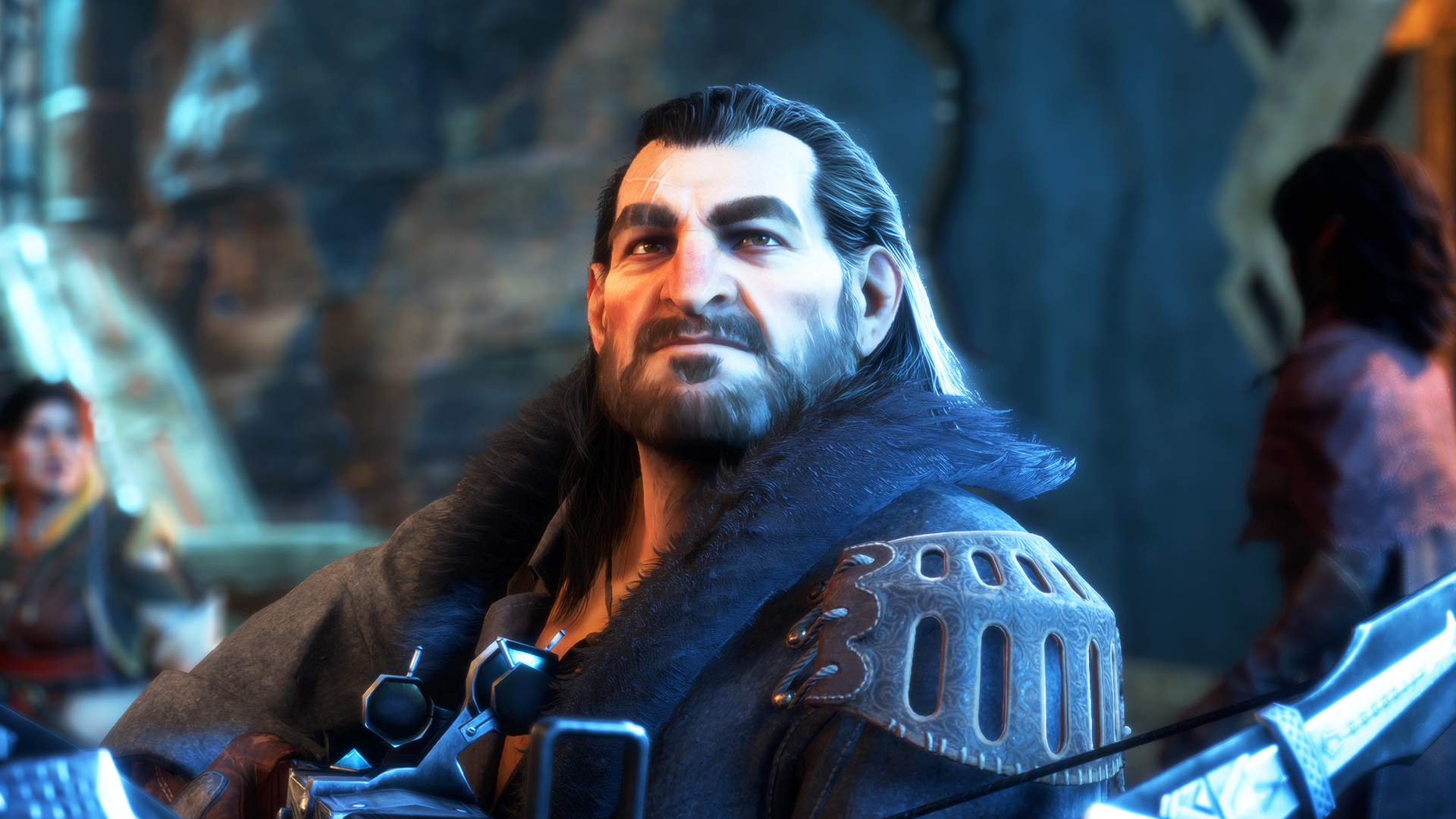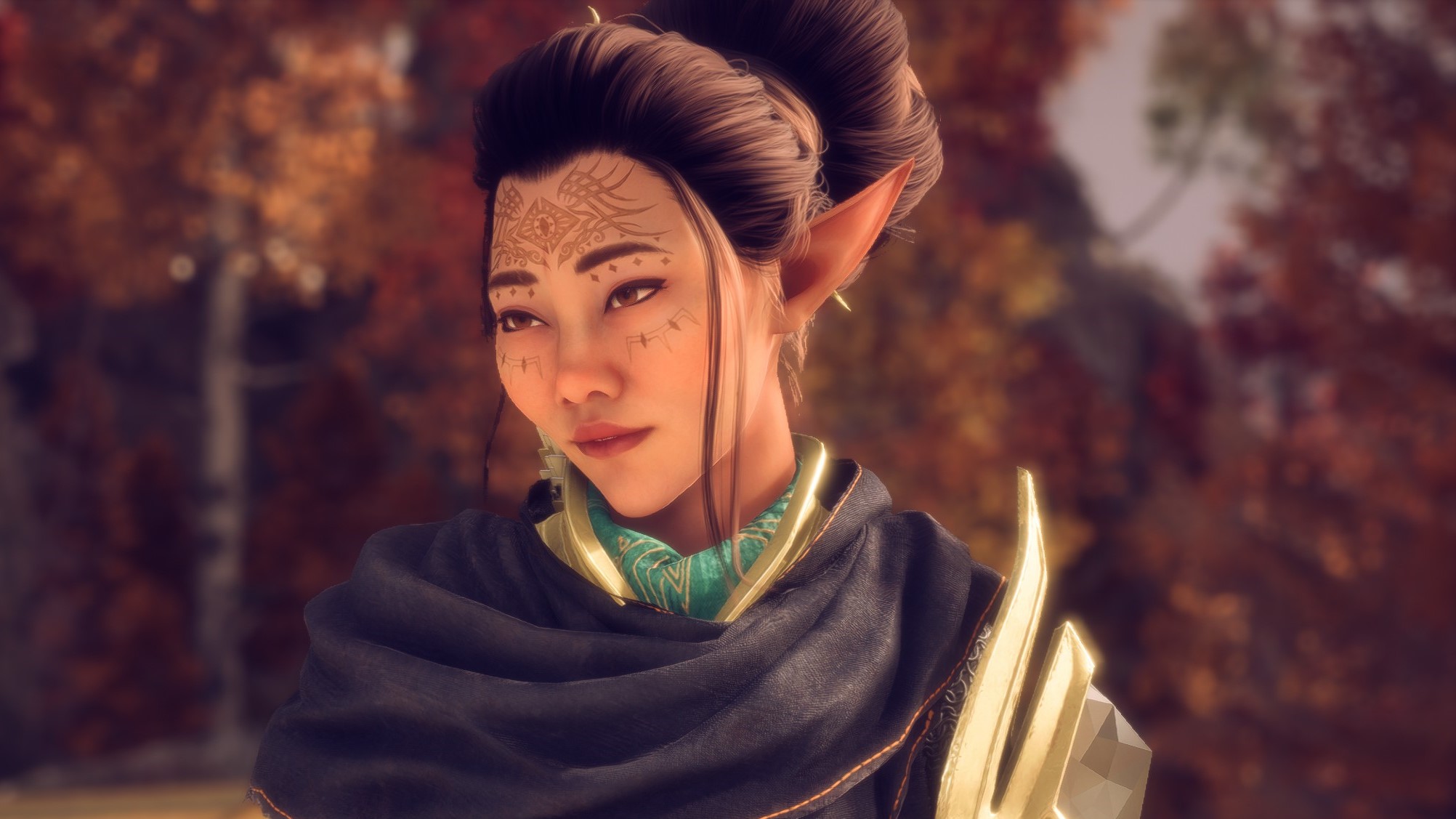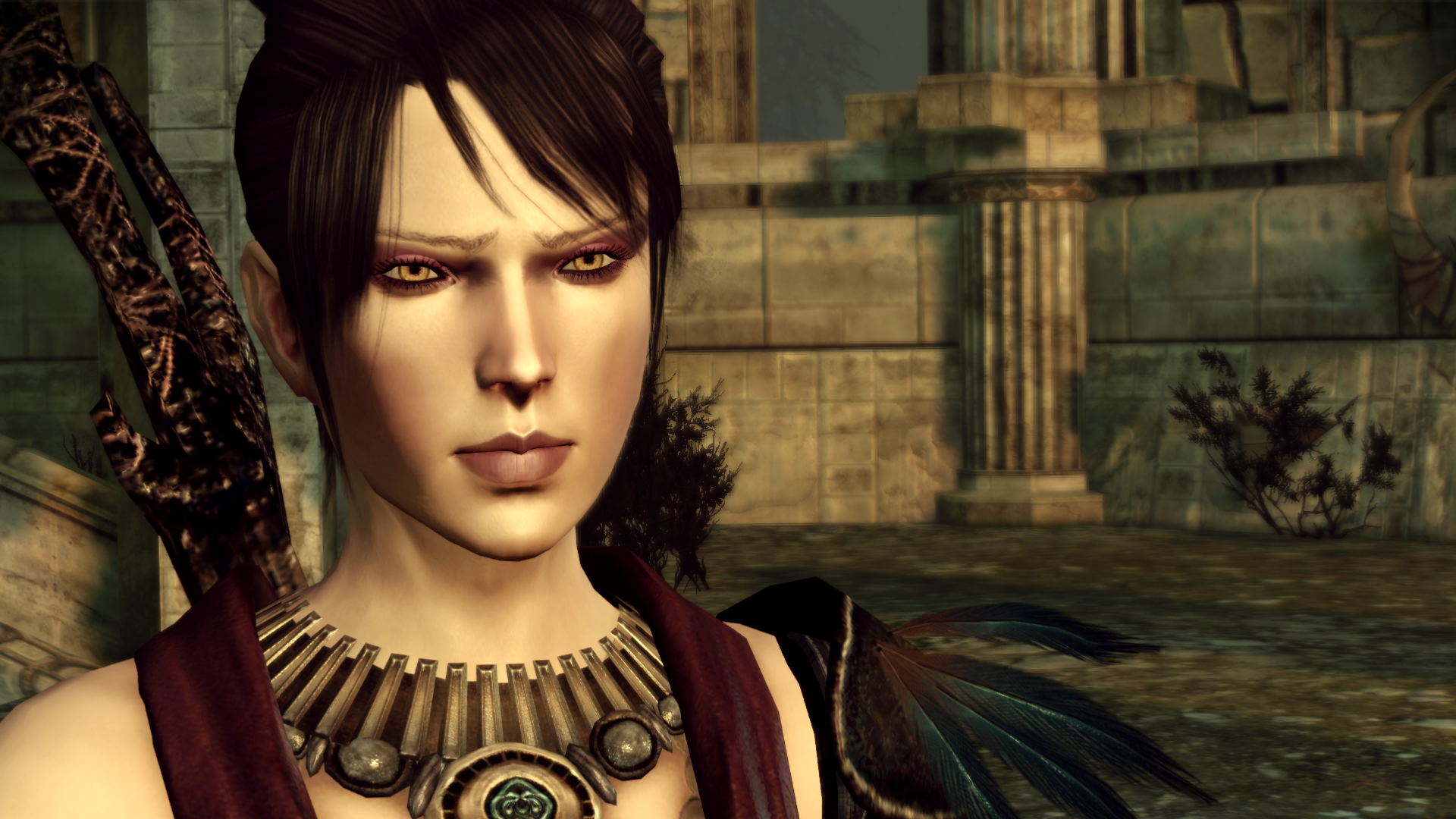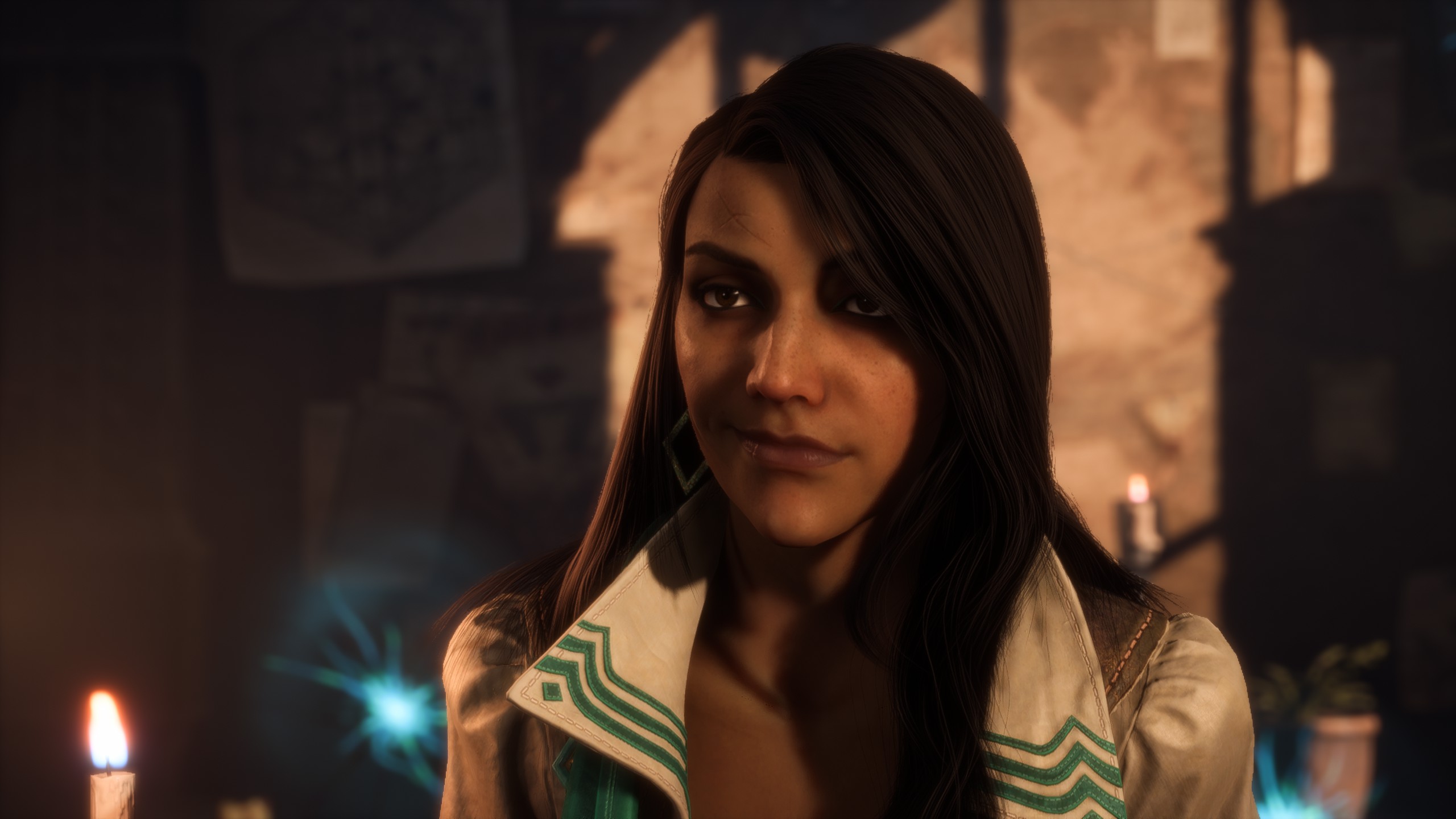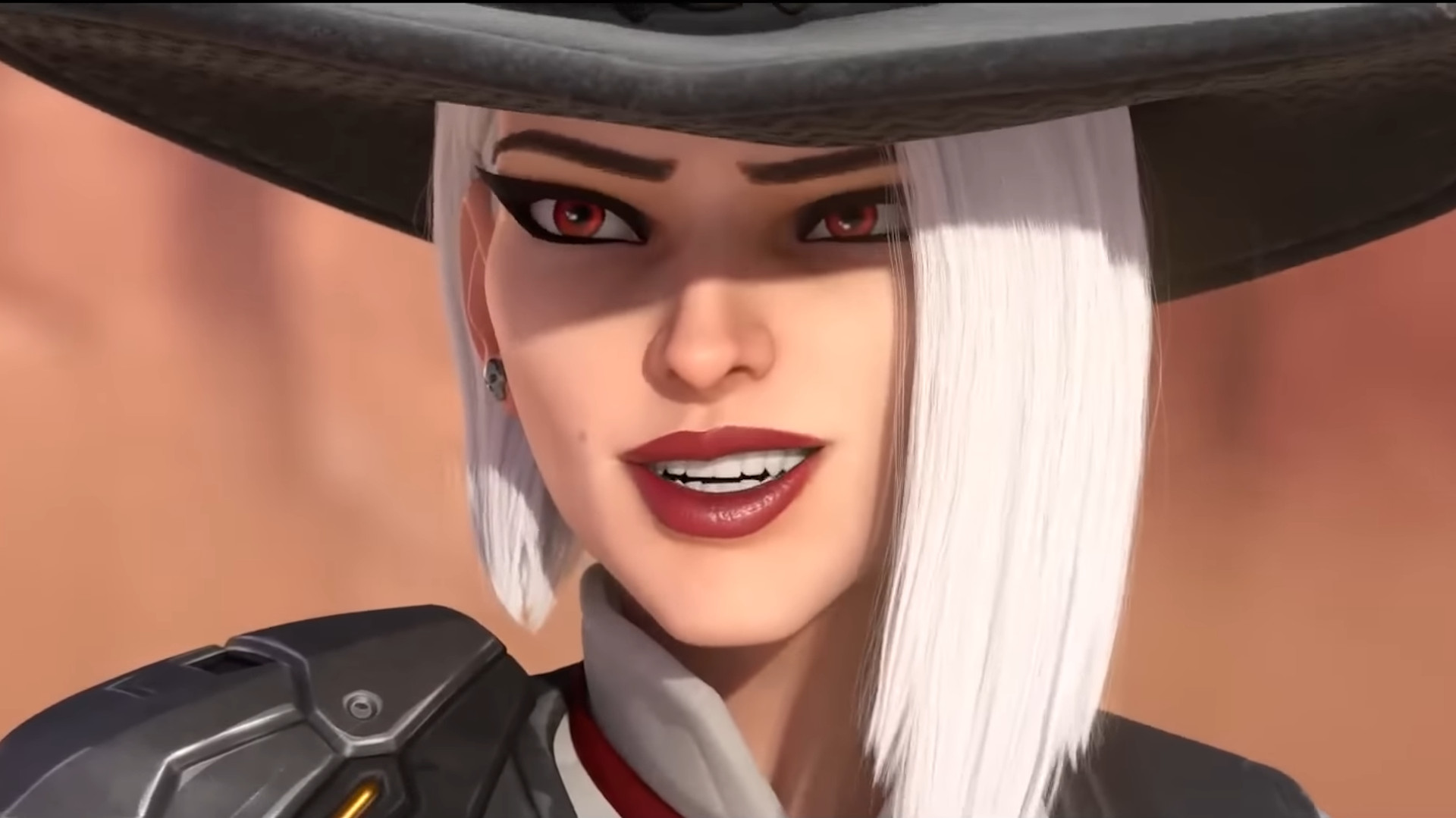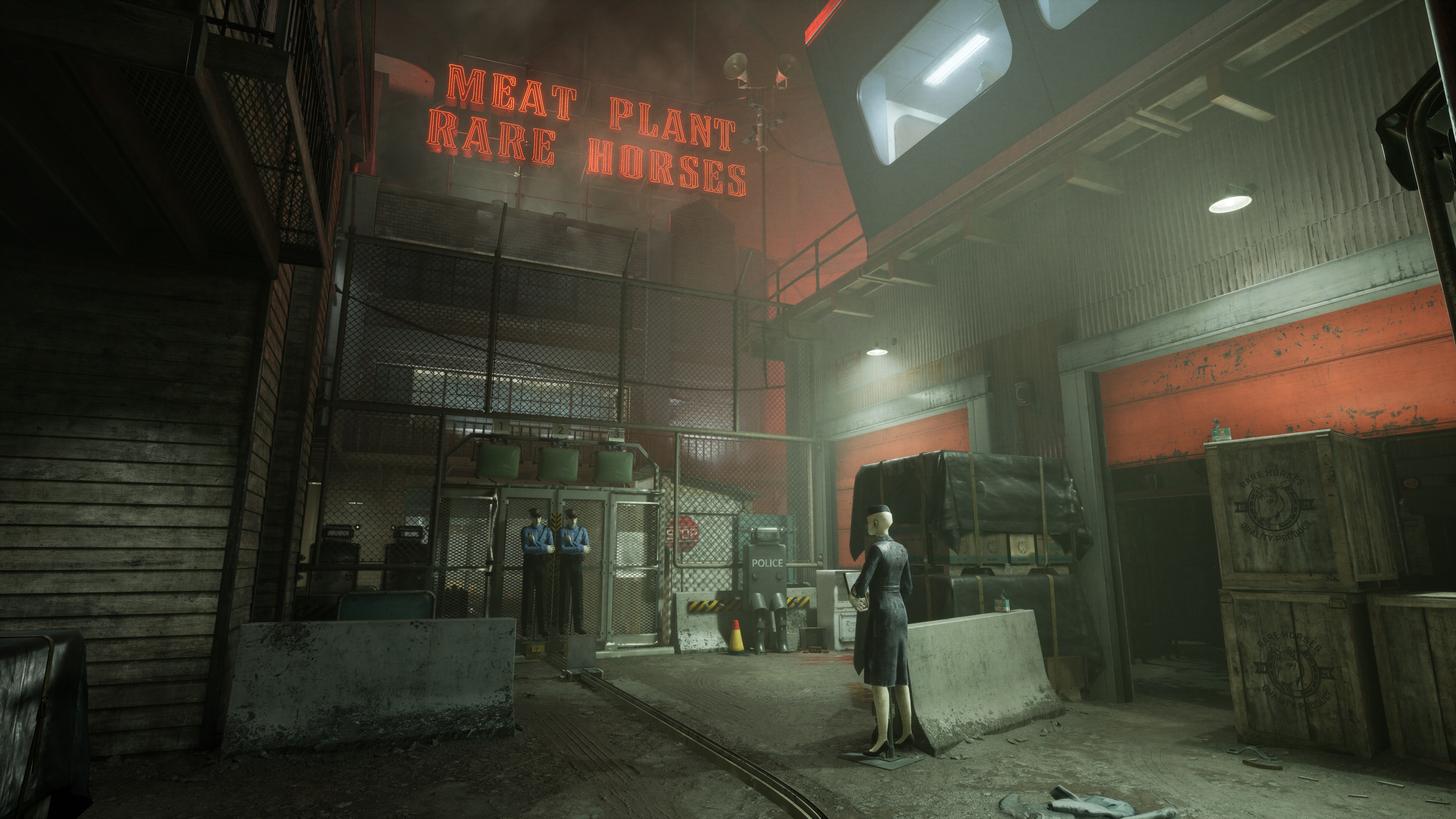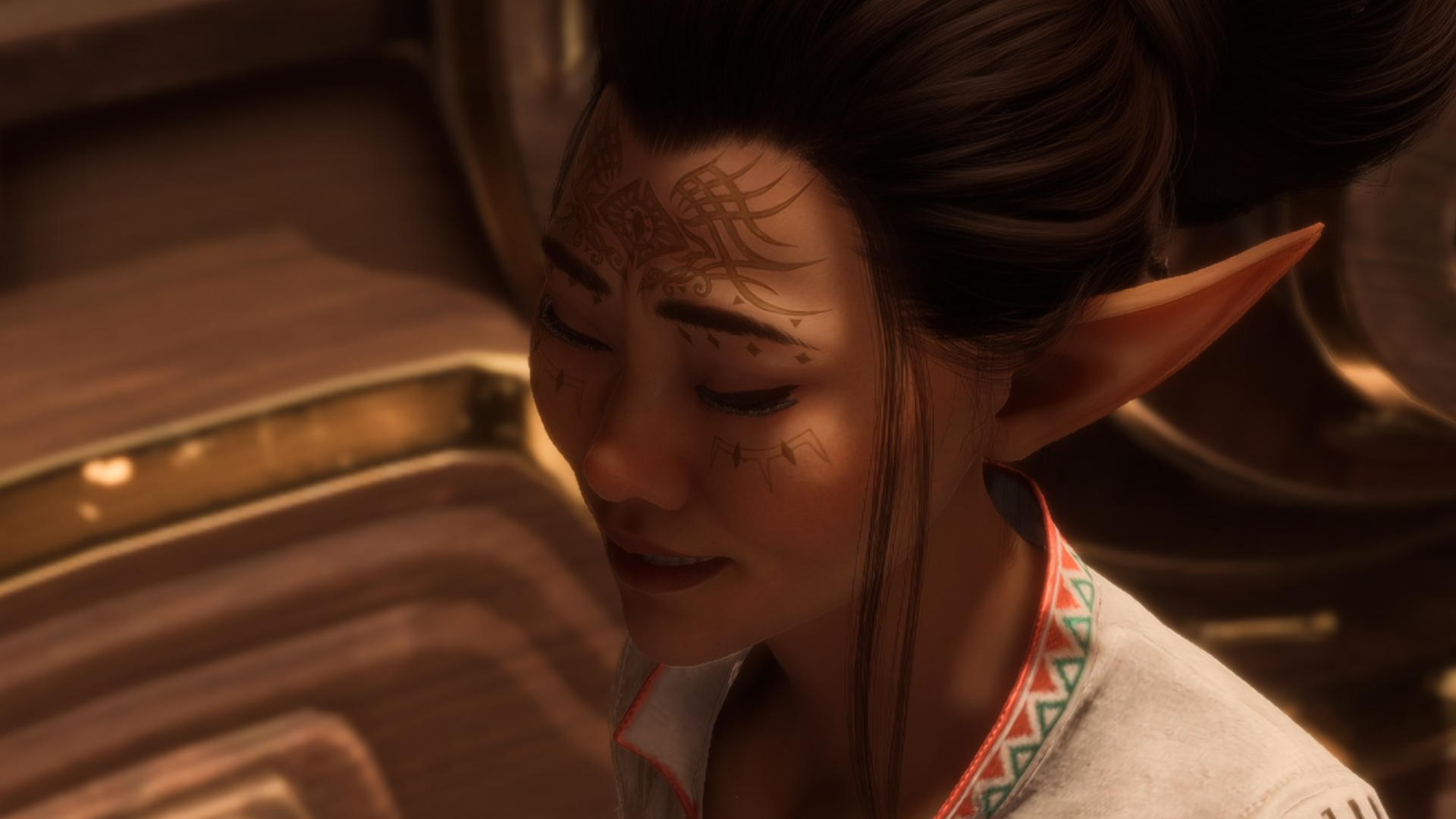
A bad handshake.
If you’ve been settling into the first few hours of Dragon Age: The Veilguard, you might’ve responded in the same way I did—with a reflexive grimace every other line. Now that I’ve sunk close to 50 hours into the game, I’m here to tell you to keep going. The story does get better. Kinda.
I still think Dragon Age: The Veilguard misses the mark in a lot of ways, and the problems of its opening hours are still present in the rest of the game. But there are things to like here. Its characters sometimes have charming moments, it does have some interesting lore drops, and I have, at times, found myself genuinely endeared to its cast. I still think we’re leagues below Dragon Age: Origins in character writing (and still measurably lower on the ladder than Inquisition), but there are bright spots.
But those opening hours, jeez. The Veilguard doesn’t introduce you to its world and setting with a flourish as much as it takes one step, tumbles clumsily down the rest of the stairs, and lands with a broken leg. Then it says “ow, falling down those stairs hurt, I feel upset about how I fell down those stairs”, before a little prompt pops up, reading: “because the story fell down the stairs, it was hurt.”
The opening isn’t just breakneck: it’s impatient. It’s like an object lesson in how a writing truism—in this instance, “all scenes need to serve the plot”—can be ruinous if taken to its extreme. The Veilguard’s first mission, the rush to stop Solas at Minrathous, should absolutely feel like a fast-paced gauntlet. There’s a timer here, and the game’s writers only have so long to get you up to speed. Unfortunately, they do that and very little else.
The exposition is dry as a wafer biscuit. As you and Varric jog through the moody streets of the Venatori’s stomping grounds, Rook asks Varric if he really thinks he has a chance to stop Solas. This is a chance for Varric to maybe express his doubts. Instead, what we get is a gormless: “That ritual is going to tear down the Veil—the only thing separating us from the Fade and an endless number of demons. I have to stop him.”
While this is useful information to the player, it’s—critically—information Rook should probably already know. You and Varric are mates, and I don’t really believe for a second that he’d wait until the run-up to tell you Solas’ plan. We’ve lived in the setting our whole lives. Rook gets what the Veil is, especially if they’re a mage. Like, if you can cast magic, Varric just did the equivalent of telling you that someone’s going to evaporate the ocean while helpfully adding that there are fish there.
I won’t pretend like I have the perfect line, but even a gruff: “If I don’t, we’re going to be ass-deep in demons before supper—let’s hope I can stop him tearing down the Veil” would play better. There are ways in which you can package this sort of information while still speaking in Varric’s voice.
Similarly, when Harding recalls how much Solas waxed lyrical about the pre-Veil world, Varric saunters in with: “That world existed before the Veil, and now he wants to bring it back.” This is the most flavourless and heavy-handed way you could possibly reiterate this information—and a missed opportunity to flesh out who Solas was to Varric, too.
The Veilguard does eventually start characterising its companions with charming scenes, but Neve’s introduction in particular made me think—man, Bioware was doing this better back in 2009.
Oh my god, they were elven gods
Neve is a character I should like. She’s a stylish, Constantine-esque detective who works with the Shadow Dragons, a potent mage, and a passionate sleuth. If we’re talking about how her intro looks on a plot summary somewhere, it’s good stuff—getting captured on purpose to find out some info is a trope, but a fun one. In practice, though, her debut is both sleep-inducing and barely gives us a scrap of information about the kind of person she actually is. It manages to take a good concept and make it unconscionably boring.
The more you play Veilguard, the more you’ll recognise this pattern. While I can say something positive about all of its companions after 50 hours, this game has absolutely no idea how to introduce anybody. It believes the best way to have a character make a lasting impression is to give them a sick fight scene, have them make a cool pose, and say something rad. While I do think Veilguard has 100% become more Marvel-esque, I don’t think that’s the core problem. Marvel movies are quip-happy, but in the best of them that snappy, solid dialogue effectively communicates character.
Neve’s intro here is flashy, but basically devoid of any substance that could get us interested in her. Yes, it’s neat that she’s cool and competent, but she’s also a party companion. That is to be assumed. Even the way she sums up what she was doing is dry: “Figured I’d play along, see who wanted to settle the score this time, but then the sky started raining demons, so I’m back on the job.”
While the lines that follow after could help bring the player’s attention to core elements of her character, they’re mostly just (if you’re playing a Shadow Dragon) bland exposition about how cool and reliable the Shadow Dragons are. Then there’s this exchange, where Varric says (of Solas): “I also told you he was an ancient elven god,” to which Neve replies: “An elven god. Well, whatever he is, he’s causing trouble in my city.”
Neve’s intro here is flashy, but basically devoid of any substance that could get us interested in her.
Taking this charitably, it’s meant to establish that Neve’s a sceptic. Her brushing aside the elven god thing makes sense. But because the dialogue’s so thin, so devoid of sauce, Neve sounds like she’s repeating Varric before revealing that she has short-term memory problems—Neve, buddy, you know what he is, you just said what he is, we all heard it. The “my city” tacked on the end there is nice—it tells us that she feels responsible for where she lives, which does come up later—but all in all, the soup is basically water.
Bellara suffers a similar plague when we meet her in Arlathan Forest. She gets her cool flashy intro (like everyone) and then has a nice little characterising moment where she doesn’t even realise you’re standing there (Bellara’s spacey, and I like her for that).
When you tell her, however, that the gods of her religion aren’t just back but are also evil, her response is wasted space incarnate—the writing tries to tell us something interesting about how she responds, but she states in plain terms how she feels, so it loses both heft and impact: “There’s something kind of exciting about it. And dangerous. Really dangerous.” I could weep.
Dragon Age: Origins knew how to do this better literally years ago. It has the advantage of a much slower introduction (which The Veilguard could’ve gone with), but the way you’re introduced to Alistair and Morrigan is far better executed. When we first meet Alistair, he doesn’t land a few flashy sword-swings as he marauds his way onto the screen, coated in Darkspawn blood—we see him bickering with a mage about a message from the reverend mother. Immediately we’re given a sense of his character when he fires back with smarm: “Should I have asked her to write a note?”
In a handful of lines, we learn that Alistair doesn’t respond well to authority, has a very sardonic view of the world, and deflects aggression with wit and sarcastic cheer—all without him clunkily nudging the plot forward. It doesn’t sequester this important information into a companion cutscene 10 hours later, it gets it done right away. Because it’s important.
Alistair isn’t just arguing with a wizard because it’s funny (although telling someone you’ll name your grumpiest kid after them is a good dunk), he does it because it’s a good way to tell us, the audience, what kind of person he is—and then we get to be curious about how he got that way, especially in a land full of high-fantasy snobbery. It’s good food.
Morrigan’s similar. Her entrance is a great attention-grabber, but the fact she immediately assumes that we’re either vultures “poking amidst a corpse whose bones were long since cleaned,” or dumb invaders come to trample all the wildflowers? That tells us a ton about how she views the world: Witheringly, and like she already knows everything.
Imagine if, instead of Neve getting her flashy little Marvel moment, we instead got to see her being interrogated by the panicking Venatori, who are understandably losing their chill over the tear in the sky. Rook could even have a little “We have to go help her!” moment before Varric holds us back, because he’s seasoned enough to know when someone’s in control of an interrogation.
All of The Veilguard’s initial payload of exposition about the Shadow Dragons and the Venatori could be settled here, alongside Neve’s inquisitive mind and her ability to stay calm and collected under pressure—tied off in a single bow while she plays them like a fiddle. Then she can break out and have her little action scene moment.
I have similar feelings about Bellara: What if, instead of us telling her about the evil god situation, we walked in on her and another Veil Jumper talking about it? Bellara’s brain could be buzzing with theories which she voices, overenthusiastically, while her companion reacts with horror—heading back to camp after Bellara puts her foot in it. I am basing this off how Bellara describes herself in a companion cutscene later, by the way—we could literally just establish that about her in the opening minutes.
Bioware-assigned character development
I don’t mean to dunk on any one particular writer responsible for a character’s dialogue. Games are monstrously complicated, and issues with the script can spawn from blights of production problems, poor edits, voice direction, time crunches, and so on. There’s any number of reasons a game’s writing can suffer—but it has suffered here.
The story of The Veilguard does get better, but a lot of the woes in its opening hours haunt the rest of the script, even if it does start taking honest and heartfelt swings at properly developing its cast. Throughout the whole game Bioware cordons off “plot” and “companion development” into two neat boxes where the wires barely ever cross, to the detriment of everything.
Some moments are really lovely. Emmrich, a necromancer you meet later in the game, has some stand-out turns of phrase that describe his struggles in a poetic and impactful way, and Neve shines when she’s talking about her deep love of Minrathous and Dock Town. Taash’s story can be heavy-handed at times, but Rook’s guidance, especially playing as a non-binary, feel heartfelt and from a place of reality (if a little too modern with its language). Even Lucanis gets his little sweetie moments, going shopping for the team and making fun of you for choosing tea instead of coffee (something the game’s kept weirdly specific track of).
The story of The Veilguard does get better, but a lot of the woes in its opening hours haunt the rest of the script.
But it also rattles through these personal issues like it’s ticking off points in a checklist, and the clunkiness never quite goes away. The game doesn’t know how to let moments sit when they need to—and it can’t string together its bucket of (genuinely quite good!) ideas in a way that leads to a lasting impact, let alone in a way that relates to events in the main plot.
Your companion characters are permitted their Bioware-assigned development time, but they’re not allowed to breathe properly anywhere else. NPCs suffer the most from this relentless hustling, existing more as sidequest delivery systems than opportunities to expand the world and provide interesting quandaries. I can’t for the life of me tell you what Veil Jumper head honcho Strife’s deal is, and I’ve been playing the game for 50 hours. He’s just there to look cool and sound like a soldier.
I do think people are going to enjoy this story, and for all of my issues outlined above, I hesitate to say it’s bad. At its best, Veilguard is clever, earnest, and full of character—at its worst it’s condescending, insecure, and paced like a mouthful of firecrackers. The idea that we’re looking at a return to form for Bioware’s storytelling in any way, I think, is wrong—there’s a genuine glimmer of potential, it’s just buckling under its own clumsy weight, and that’s a right shame.

